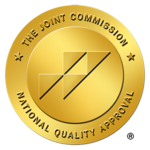Home / What We Treat /
Home / What We Treat / Dual Diagnosis Treatment Centers In St. Louis | Engage Wellness Missouri
The experience of struggling with both mental health and addiction disorders completely reshapes how you see the world and how you live your life. But it’s unfortunately quite common. According to the Substance Abuse and Mental Health Services Administration (SAMHSA), it’s estimated that more than 21 million Americans meet the criteria for a co-occurring disorder.[1] Treating both disorders with integrated holistic methods treats the whole person, not just the disorder.
What Is A Dual Diagnosis?
A dual diagnosis or co-occurring disorder is a diagnosis prescribed when someone suffers from a substance use disorder and a mental health condition at the same time. Some of the common mental health issues commonly tied to co-occurring disorders and co-presenting with substance use disorders include anxiety, borderline personality disorder, depression or major depressive disorder, post-traumatic stress disorder (PTSD), psychotic disorders, personality disorders, and more.[2] The prevalence increases for adolescents and also includes behavioral disorders like conduct disorder and attention deficit/hyperactivity disorder (ADHD).
Which came first may vary from person to person, and one doesn’t necessarily cause the other, but each can negatively influence the other to damaging outcomes. Each disorder can vary in severity over time and complicate the treatment process. Someone with a co-occurring disorder may require more immersive treatment strategies and extended timelines to promote holistic healing.
Addiction and Mental Health: Understanding The Connection
It’s critical for recovery success to understand the connection between mental health and substance use. Dealing with one can be debilitating, but struggling with both can be devastating.
Studies clearly show that the two conditions have several common risk factors, including inherited characteristics, adverse social environments, trauma, and stress, all of which can contribute to co-occurring disorders.[3]
Those with mental health conditions have an increased risk of developing substance use. One study revealed that more than 30% of adults with substance use disorder experienced childhood trauma in one form or another.[4] Not to mention the high potential for self-medication for those who live with anxiety, stress, depression, or chronic pain. Of course, some substances can briefly alleviate symptoms, but in the long term, they can actually intensify them.
On the other side of the equation, alcohol and substance abuse can influence the scope or intensity of existing mental disorders and worsen some symptoms. Additionally, some substances can alter brain activity and lead to damage in the same brain areas that control or disrupt anxiety, mood, or impulse control.[5]
The only effective treatment approach is one that integrates mental health with substance use interventions and treats the whole person, rather than individual disorders. Leveraging holistic and evidence-based treatment methods offers clients the best chance of success.
Common Mental Health Disorders Associated With Addiction
The prevalence of mental health issues is common among U.S. adults and across the world. Official data reveals that more than one in five live with a mental health disorder, which amounts to roughly 59.3 million people and more than 23% of the adult population.[6] Some mental illnesses are pervasive and can last years or a lifetime; others are more temporary or circumstantial, like following a traumatic event or incident.
Common mental health conditions associated with co-occurring disorders include:[7]
01
Depression or major depressive disorder leads you to feel down and stuck in the dark, where joy is elusive. This can lead to self-medication with harmful substances, which can, in turn, lead to more depressive symptoms and continue the cycle of addiction.
02
Anxiety puts your body in a constant or unnecessary fight-or-flight response, even when there is no present threat. Someone struggling with anxiety, Generalized anxiety disorder (GAD), panic disorders, or phobias may attempt to calm their nerves with substances or quiet the noise in their mind. Unfortunately, anxiety disorders can also be triggered by some substances and exacerbate symptoms.
03
Traumatic events and chronic exposure to trauma leave their mark on your mind, your body, and your soul. These experiences can change how you view the world and negatively impact your ability to make decisions and process emotions. Living with PTSD can influence substance use in an attempt to forget adverse experiences or mitigate symptoms.
04
Bipolar disorder is defined by severe mood swings that make it difficult to manage everyday experiences, let alone more complex emotions. Substance abuse alongside bipolar disorder can wreak havoc on your stability, worsen symptoms, and make it harder to maintain healthy routines.
05
Behavioral disorders like ADHD reflect an alternate operating system that changes how someone interacts with and engages with the world around them. This means that how they approach problems and solutions is outside typical approaches and creates an additional challenge for substance use disorder treatment.

Common Drugs Associated with Dual Diagnosis
Whether substance use starts as self-medication for mental health, curiosity, or experimentation, or even as a prescription solution for a mental health condition or physical pain, substances that carry a high potential for dependence and abuse are exceedingly difficult to stop. Some of the most common substances associated with a dual diagnosis include:
Signs and Symptoms of Co-Occurring Disorders
According to the Substance Abuse and Mental Health Services Administration (SAMHSA), a co-occurring disorder with substance use and serious mental illness is defined by an adult (over 18) experiencing a diagnosable mental, behavioral, or emotional disorder within the last year—one that causes serious functional impairment, interferes with or limits one or more major life activities paired with substance abuse.[9] When diagnosing a co-occurring disorder, providers and clinicians look for functional impairments and limited life activities, among other factors. Examples include limited or impaired functioning in various settings, such as at home, school, work, or in social situations. Additionally, the substance use disorder component of a co-occurring disorder can also cause significant impairment, health problems, physical, mental, or emotional disability, and failure to fulfill obligations at work, school, or home.[10]
Identifying a co-occurring disorder can be challenging, as the symptoms of different mental health conditions and the effects of different substances will vary. However, some common signs of a co-occurring disorder include:
Due to the complex symptoms and experiences of co-occurring disorders, integrated, holistic mental health and substance use treatment is critical for successful recovery.

What Does Dual Diagnosis Treatment in St. Louis Look Like?
Each client will first participate in an initial evaluation to determine the level of care needed and to design a personalized treatment plan that meets each person’s unique needs. Based on this evaluation, clients will be placed in one of the following treatment programs:
Our holistic and evidence-based therapy interventions are part of all treatment programs and have significant benefits for co-occurring disorders. These treatment options include one or more of the following:



